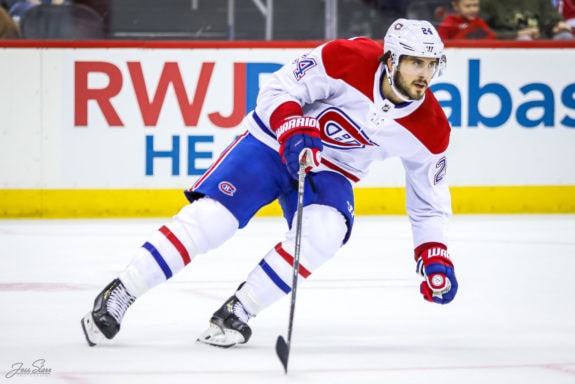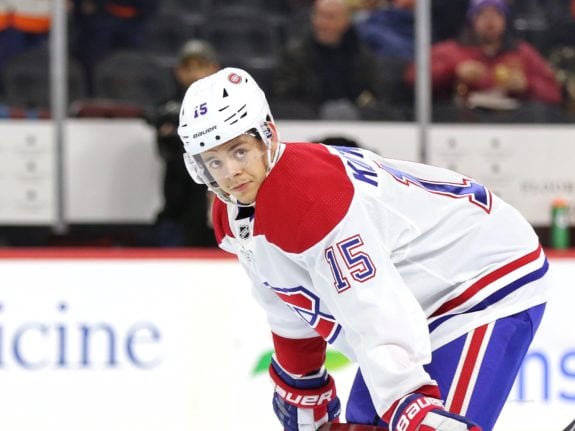On Wednesday, the Montreal Canadiens lost a stalwart center in Phillip Danault to free agency. For Danault, as many suspected he would, he tested the free-agent market and found himself a long-term and lucrative contract with the Los Angeles Kings (six years at $5.5 million a year). The deal is a solid one for the 28-year-old, taking him into his mid-30s. General manager Marc Bergevin technically had the money to re-sign the Victoriaville, Quebec-native, but the two sides most likely disagreed on length of term and role within the lineup.
There is evidence in the public record to suggest the latter points are true, as Danault himself publicly expressed that he was unwilling to change his role on the team after Jesperi Kotkaniemi and Nick Suzuki took massive steps forward in their development during the 2020 Playoffs. A run to the Stanley Cup Final this year only furthered this narrative, with the two young stars playing pivotal offensive roles in the team’s success. The veteran instead focused primarily on defensive shutdown duties, which were pivotal to propelling the Canadiens to the Stanley Cup Final.

However, even with the impressive development of Suzuki, Kotkaniemi, and Jake Evans, in 2021-22, the Canadiens will miss Danault’s two-way reliability as their young centers will likely collectively experience more growing pains in that regard. The Canadiens will be in a very difficult Atlantic Division with serious powerhouse contenders, including the two-time reigning champion Tampa Bay Lightning.
Danault’s Reliability
Danault frequently faced criticism for his apparent lack of offensive production. Last season this was particularly emphasized in a shortened season where he experienced long goalless and pointless streaks. Finishing plays was clearly an issue. However, he was extremely reliable on the defensive side of the puck and still possessed solid underlying analytics in terms of driving offensive play. Simply put, losing a player of this kind of importance without any comparable replacement is going to negatively affect the team in the short term.
In addition, Danault averaged 16:52 of ice time per game in the 2020-21 regular season and 18:56 in the playoffs. These minutes were usually against the opposition’s top offensive players and will also not be easily replaced. Furthermore, Danault took essentially all of the key defensive zone faceoffs for the team. Overall, he had the best faceoff percentages on the team during the season and playoffs (52.5 percent and 54.2 percent). The Canadiens as a whole finished the season ranked 25th in the league in faceoffs, a clear weak spot for the team.
Time on Ice Upgrades
For comparison, Suzuki actually had a higher time on ice average in the regular season at 18:11 and essentially identical time on ice in the playoffs at 18:55. It is clear that as of now the number one role is now his. Things get a little murky the further down the depth chart.
Kotkaniemi is a very good young player but has still struggled with consistency at times. He averaged 14:48 of ice time last season, although he easily could have managed more in a limited capacity. Next season, he will have to produce and contribute more offense while eating more difficult and lengthy defensive minutes for 82 games. This is a tall task for a 21-year-old, even one entering his fourth NHL season.

Evans is in a similar position having averaged only 11:50 of time on ice per game in 2020-21. He, too, will have to absorb a ton of extra minutes in the current lineup schema, although in a more defensive posture. During the 2021 Playoffs, he did demonstrate that he could play more minutes in a shutdown role, particularly in the final three games against the Toronto Maple Leafs. That said, he was playing left wing on Danault’s line and was not primarily tasked with down-low play or faceoffs. For now, there is a question mark as to how effective Evans will be over an 82-game season with an enhanced role.
The Current Plan
For now, the Habs will have to hope that their young centers take large steps forward again next season. Plan B would require Bergevin to acquire another high-end center via trade, rather than through a free agency. This is based primarily on supply. There are very few, if any, remaining elite centermen on the market who are obtainable. Ironically, in order to acquire a top-talent center from elsewhere via trade, the Canadiens would likely have to depart from players like Suzuki or Kotkaniemi. These two players have such high ceilings that any move for a top center could ultimately become only lateral.
In any case, the Canadiens made the correct long-term decision by allowing Danualt to walk to free agency. In the short term, though, do not be surprised if next season has its highs and lows at the center position.